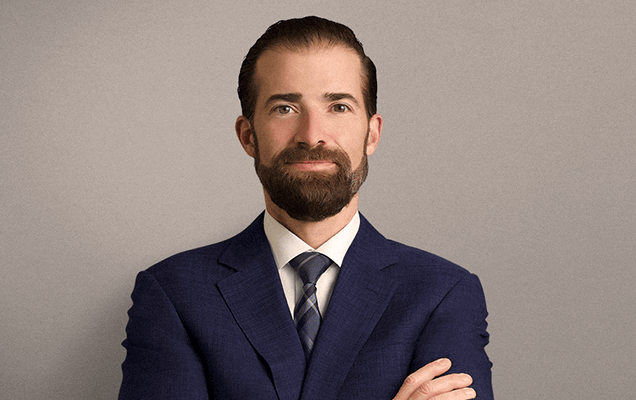Trigeminal neuralgia is a neurological condition that causes intense facial pain or burning sensations. While trigeminal neuralgia can occur at any age, it is most common in people over 50 years of age or older. Women tend to suffer from trigeminal neuralgia more than men.
But what if you are a younger than 50 years old and experiencing these symptoms? Can trigeminal neuralgia occur in younger patients? If so, what are the common causes of trigeminal neuralgia and what can you do to start treating it if you have facial pain due to trigeminal neuralgia?
What is Trigeminal Neuralgia?
Trigeminal neuralgia is a condition that causes extreme pain or muscle spasms in one side of your face. Common symptoms of trigeminal neuralgia include:
- Pain in one side of your face, jaw or ear
- Muscle spasms in your jaw
- Sharp, electric-like shots of pain in your face
- Burning or tingling sensations in your face
- Pain or ache in your teeth or ear
If you have any of these symptoms — at any age — you should visit your doctor right away to get an accurate diagnosis and start treating your symptoms right away.
The causes of trigeminal neuralgia can vary, so your doctor can perform special tests — like an MRI or CT scan — to rule out certain conditions that cause facial pain and to accurately diagnose your trigeminal neuralgia.
You have two trigeminal nerves — one on either side of your face. Typically, one of your nerves becomes irritated with trigeminal neuralgia, so your symptoms will most often be felt only on one side of your face.
Causes of Trigeminal Neuralgia in Younger Patients
The trigeminal nerve is one of the 12 cranial nerves. These nerves arise from your brain or brain stem and serve to provide sensory and motor function to areas around your head and face. The trigeminal nerve is the 5th cranial nerve.
There are many different conditions that can cause facial pain. These may include:
- Temporomandibular joint disorders (TMD)
- Sinus infection
- Trigeminal neuralgia
- Hemifacial spasm
Since so many different conditions can cause facial pain, it is essential that you work closely with a trusted physician to get the right diagnosis for your symptoms.
There are many different causes of trigeminal neuralgia in younger patients. First and foremost, trigeminal neuralgia is often caused by compression and irritation of your trigeminal nerve from its neighboring artery or vein.
There is a vascular bundle that resides near your trigeminal nerve and brain stem, and occasionally this can rub abnormally on your trigeminal nerve, causing facial pain.
Another, more rare, potential cause of trigeminal neuralgia in younger patients is multiple sclerosis. This is a neurological condition that causes loss of the myelin sheath that covers many of your nerves.
When this sheath covering your trigeminal nerve is damaged, nerve impulses and signals become disrupted and may lead to facial pain and symptoms.
Another rare cause of trigeminal neuralgia in young people is tumors or cysts in the brain stem near your trigeminal nerve. These lesions can place pressure against your trigeminal nerve and cause your symptoms of trigeminal neuralgia.
Your doctor can determine the exact causes of your symptoms and offer you the best treatment for your condition.
Trigeminal Neuralgia Treatments
There are many different treatments available for trigeminal neuralgia in younger patients. When first diagnosed, your doctor will likely prescribe medication to control your symptoms. Often, medicine for trigeminal neuralgia loses its effectiveness over time, and many young patients with trigeminal neuralgia require more extensive treatments.
There are a few different surgical procedures to help patients definitively treat their trigeminal neuralgia. Your neurosurgeon can help determine the best treatment for you based on your specific condition and the cause of your trigeminal neuralgia.
Are you out of options
to eliminate your pain?
Microvascular Decompression Surgery
Microvascular decompression surgery for trigeminal neuralgia is a type of brain surgery that is used to take pressure off of your trigeminal nerve.
During the surgery, a small incision is made behind your ear, and a tiny portion of your skull is removed to visualize your trigeminal nerve. A small Teflon pad is then placed between your nerve and its neighboring artery to relieve pressure off your nerve in hopes of decreasing your symptoms.
Gamma Knife Radiosurgery
Gamma Knife Radiosurgery is a type of brain surgery where several focused beams of radiation are directed at your trigeminal nerve.
This radiation slightly damages your trigeminal nerve and helps to disrupt the painful signals traveling through the nerve. One of the benefits of this surgery is that no true incision is made into your brain or skull, minimizing the risk of infection or blood loss.
Percutaneous Rhizotomy
A Percutaneous rhizotomy is a procedure that may be performed to relieve symptoms of trigeminal neuralgia in younger patients.
During this procedure, a small needle is passed through your cheek and to an area near your trigeminal nerve. An electrode element is used to heat and slightly damage your nerve, helping to relieve painful signals through the nerve.
Pain Stimulator Placement
Some patients with trigeminal neuralgia benefit from pain stimulator placement. This is a tiny wire electrode that is threaded near your trigeminal nerve.
The electrode then provides small electrical signals to the nerve, disrupting the painful signals that are present in trigeminal neuralgia. The electrical signals help to decrease that facial pain that you are feeling.
Of course, if your trigeminal neuralgia is caused by compression of your nerve by a tumor or cyst, your neurosurgeon may elect to simply take pressure off your nerve by excising the lesion. Work closely with your surgeon to understand the cause of your trigeminal neuralgia and the type of procedure needed to help offer you relief.
First Steps to Take When Diagnosed with Trigeminal Neuralgia
When you are first diagnosed with trigeminal neuralgia, your doctor may send you to a facial pain clinic for treatment. If your symptoms are persistent, you should work to find a trusted neurosurgeon who treats facial pain disorders so you can get the best treatment for your trigeminal neuralgia.
Your neurosurgeon should take the time to help you understand your condition and the treatment options available for you. He or she should answer your questions and should offer you alternatives to treatment.
Most importantly, your neurosurgeon should feel like a trusted ally, working with you to find the best treatment for your trigeminal neuralgia.
If you are a young patient suffering from facial pain from trigeminal neuralgia, then you understand how the pain can limit your ability to concentrate on work and recreational activities. Finding the right neurosurgeon for you can help you have the best possible experience with treatment to maximize your outcome with your trigeminal neuralgia treatment.

About Dr. Anthony D'Ambrosio
Dr. Anthony D'Ambrosio is an accomplished neurosurgeon in North Jersey and a proud member of Neurosurgeons of New Jersey practicing primarily out of their Ridgewood office conveniently located on East Ridgewood Avenue. Dr. D’Ambrosio focuses his clinical practice on brain tumors, nervous system disorders, and facial pain disorders. He has expertise in a variety of complex surgical and radiosurgical techniques as well as minimally invasive procedures intended to successfully treat complex diseases of the brain. These techniques include micro-neurosurgery, microvascular decompression surgery and Gamma Knife radiosurgery. He's authored over 25 peer-reviewed journals and is the recipient of many awards.
Recent Posts:






